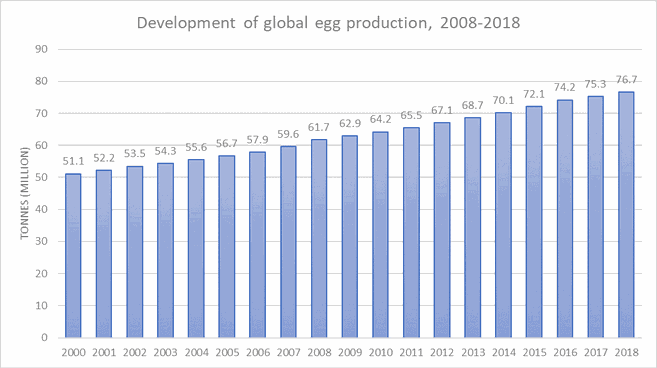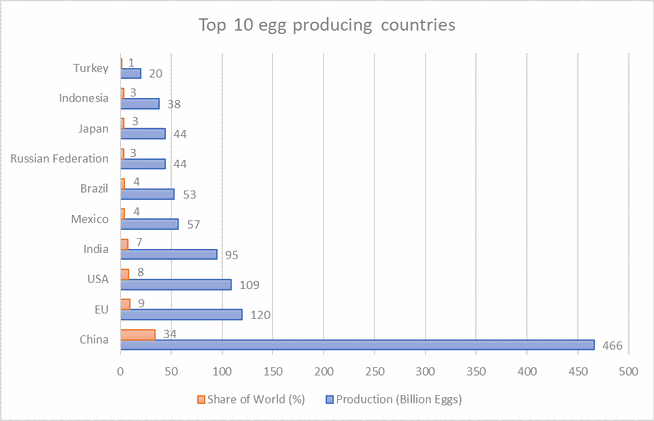Global Egg Production Continues to Grow
Over the past ten years, global egg production has witnessed impressive growth. According to data from the FAO total egg production has grown from 61.7 million tonnes in 2008 to 76.7 million tonnes in 2018 – a notable increase of 24% in ten years. Figure 1 shows the development of egg production since 2000, illustrating the continuous growth of global egg production.

In 2018, China produced 466 billion eggs (34% of world production), making them the biggest producer by far. China is followed by the EU, USA and India, with these top four regions producing almost 60% of the world’s eggs. Figure 2 identifies a list of the top 10 egg producers, which accounts for 76% of the world’s egg production.

There is a large variation in egg consumption between countries. When the total world production of eggs in 2018 is divided by the total world population of 7.6 billion people, the average consumption is 161 eggs per person per year. IEC data for the year 2018 illustrates the difference with high egg consumption in Mexico (368 eggs) and Japan (337) and a lower consumption in South Africa (130). Countries with a large population are quite different with an egg consumption in China of 255 eggs and in India 76 eggs. The EU average is 210 eggs per person per year, although within the EU consumption data also differs from high in Spain (273 eggs) and Denmark (248) to lower levels in Poland (145 eggs) and Portugal (146 eggs).
Peter van Horne is the IEC’s Economic Analyst and is a senior economist at Wageningen University and Research in the Netherlands. He is Europeans premier Poultry Economist and specialises in poultry research projects for government and industry with a particular focus on the economics of animal welfare, environmental protection, animal health and international competition.